Working with Projections¶
Peringatan
This tutorial is now obsolete. A new and updated version is available at Working with Projections (QGIS3)
Map projections - or Coordinate Reference System (CRS) - often cause a lot of frustration when working with GIS data. But proper understanding of the concepts and access to the right tools will make it much easier to deal with projections. In this tutorial, we will explore how projections work in QGIS and learn about tools available for vector and rasters - particularly re-projecting vector and raster data, enabling on-the-fly re-projection and assigning projection to data without projection.
Overview of the task¶
The task is to re-project and overlay data layers of difference projections together in QGIS.
Other skills you will learn¶
Use
.tfwfiles to georeference to rasters.How to save selected features from a layer to a new layer.
How to view metadata information for layers in QGIS.
Get the data¶
Natural Earth has Admin 0 - Countries dataset. Download the countries
UK's Ordnance Survey provides open data for download. Download the MiniScale raster product for Great Britain and extract it to a folder on your computer.
Catatan
You will need to enter your personal details to be able to download the Ordnance Survey dataset.
For convenience, you may directly download a copy of the dataset from the link below:
minisc_gb.zip (Contains only the files required for this tutorial)
Data Sources: [NATURALEARTH] [OSOPENDATA]
Procedure¶
Open QGIS. Go to .
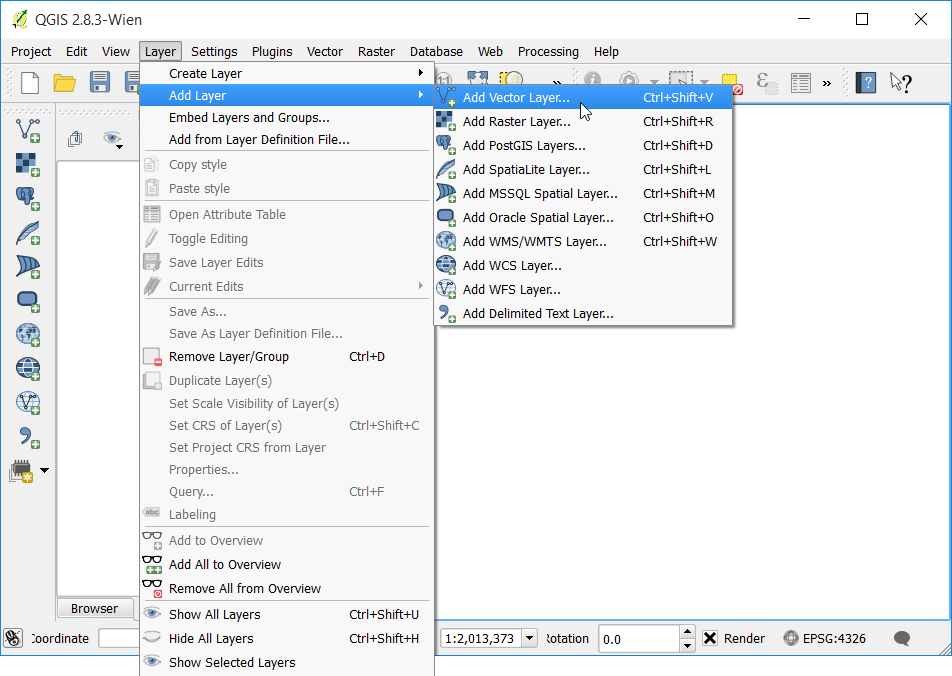
Browse to the downloaded
ne_10m_admin_0_countries.zipfile and click Open.
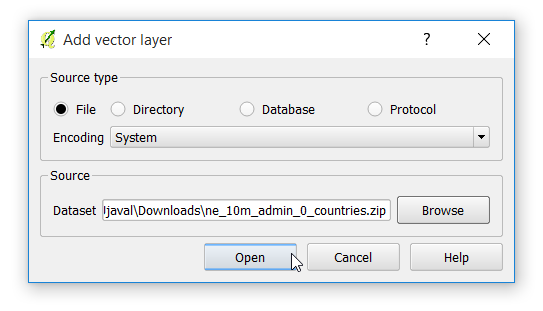
At the bottom of QGIS window, you will notice the label Coordinate. As you move your cursor over the map, it will show you the X and Y coordinates at that location. At the bottom-right corner you will see EPSG:4326. This is the code for the current CRS (Projection) for the project.
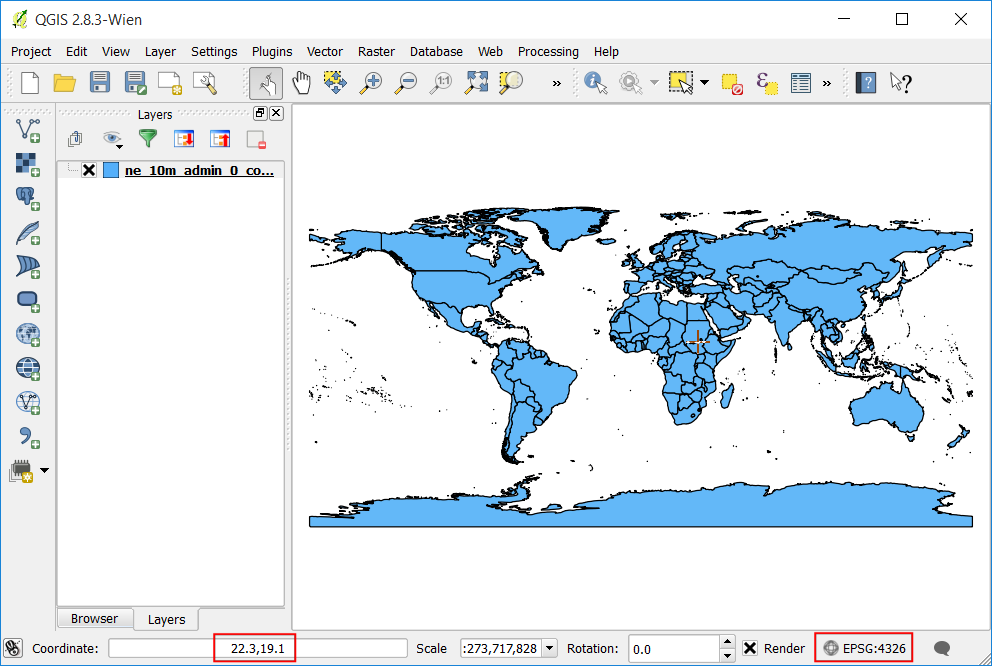
As you will later see, the project's CRS may not match the layer's CRS. To determine a layer’s projection, we can look into the metadata. Right click on
ne_10m_admin_0_countrieslayer and select Properties.
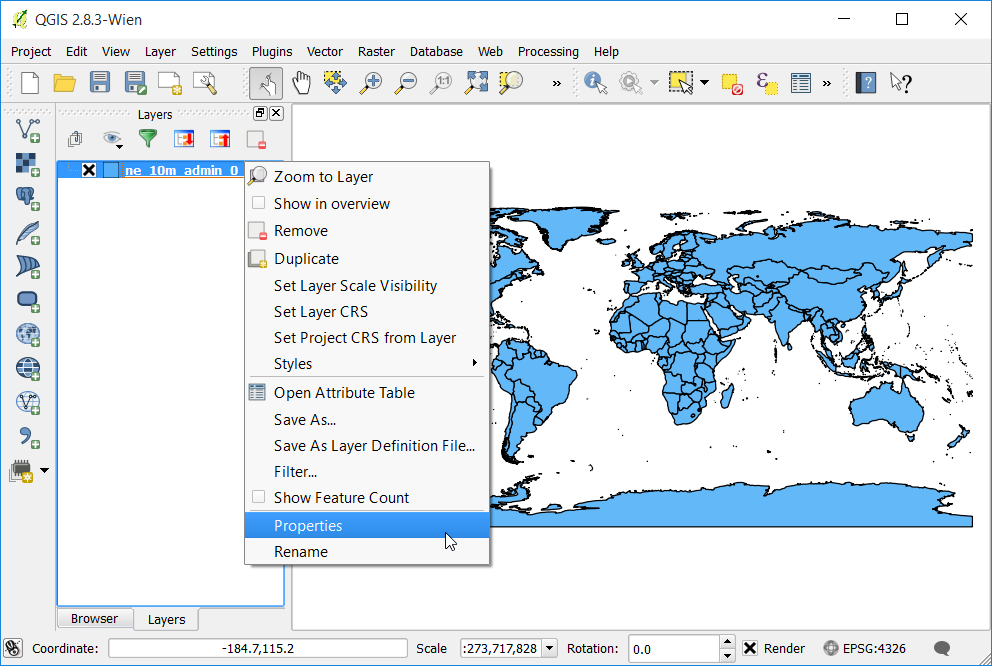
Switch to the Metadata tab in the Layer Properties dialog. Expand the Properties section. At the bottom, you will see the definition for the projection under Layer Spatial Reference System. This definition is in the PROJ.4 format.
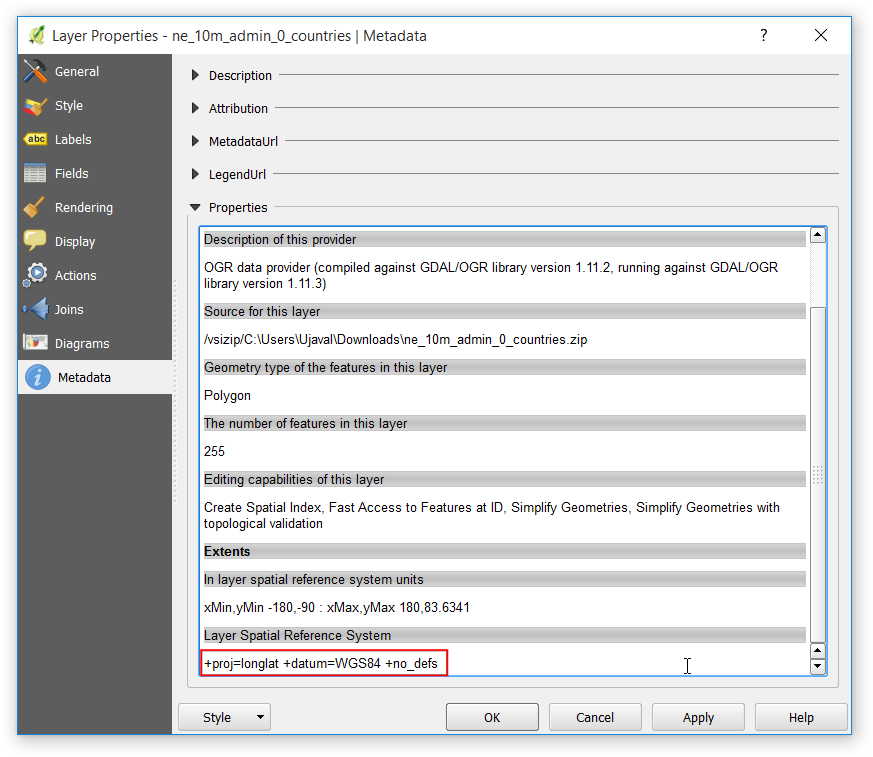
Now let's see how we can change the layer's projection. This operation is called Re-Projection. Rather than re-projecting the entire layer, we can also re-project some features from the layer. Use the Select features by area or single click tool and click on United States feature to select it.

Right-click the
ne_10m_admin_0_countrieslayer and select Save As.
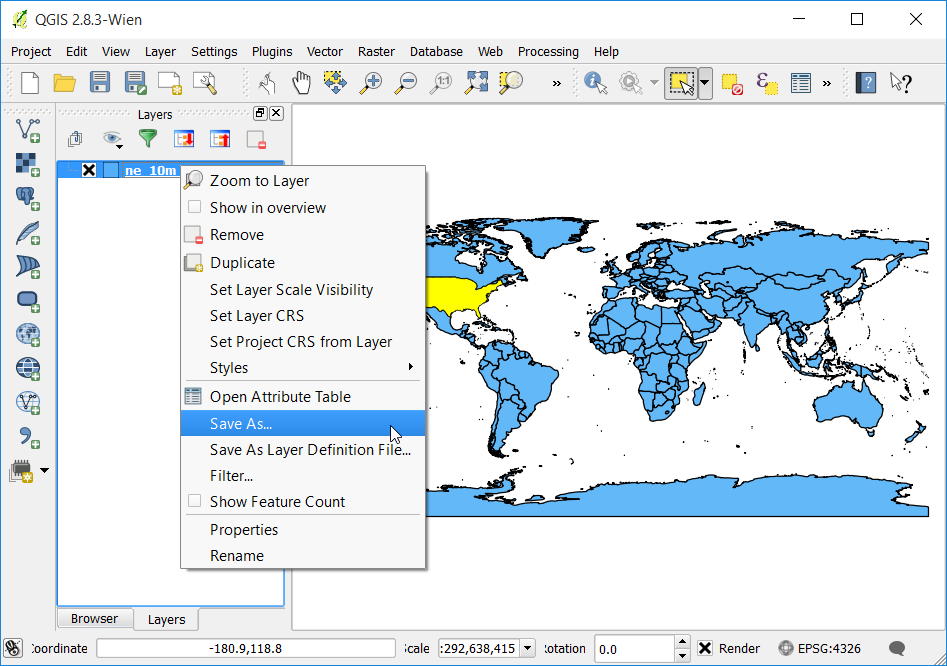
In the Save vector layer as... dialog, name the output layer as
united_states.shp. Also check the Save only selected features box. This will ensure that only the selected feature gets re-projected and exported. Next, we choose the new projection for the layer. Click on the Select CRS button.
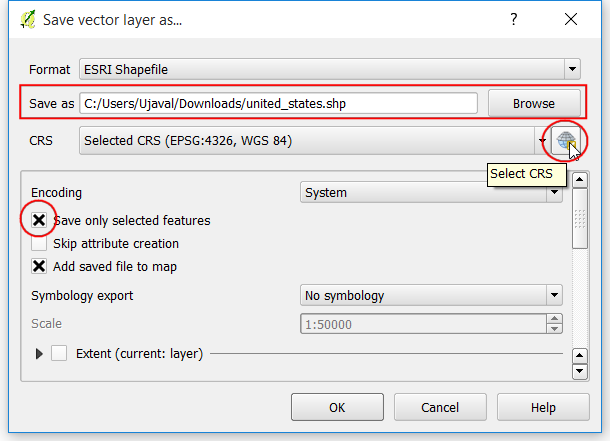
In the Coordinate Reference System Selector dialog, enter
north americain the Filter search box. Scroll through the results and selectNorth_America_Albers_Equal_Area_Conic (EPSG:102008)projection and click OK.
Catatan
We choose Albers Equal Area Conic projection for this tutorial as it is a popular projection choice for thematic maps of the US. The choice of projection for your particular use-case will depend on a lot of factors. See this guide for a good overview of Projections.
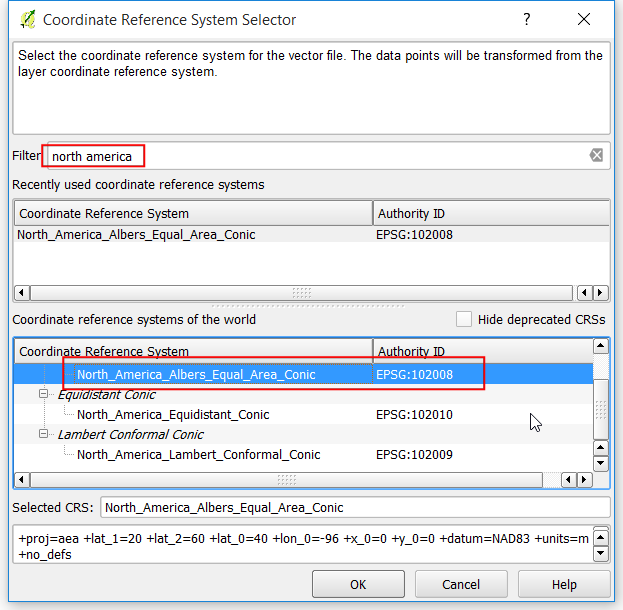
You will see the new CRS selected in the Save vector layer as... dialog. Click OK.
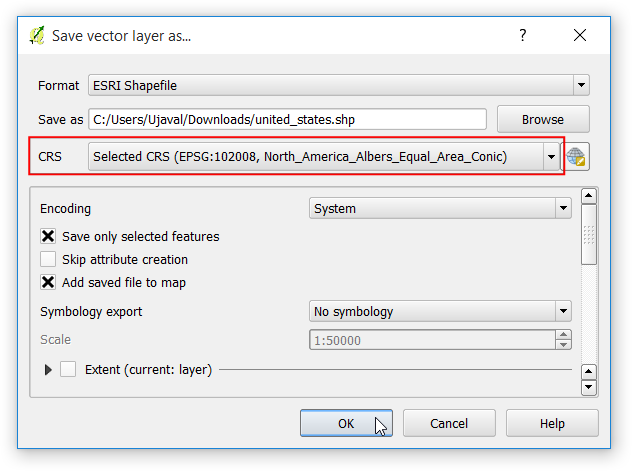
Once the re-projected layer gets loaded, you will notice that the new
united_stateslayer overlays perfectly on top ofne_10m_admin_0_countrieslayer - even though they are in different projections. This is because QGIS has a feature called On-the-fly CRS transformation. The projection text at the bottom-right of QGIS now has the wordsOTFnext the EPSG:4326`. To learn more, let's explore the CRS option in QGIS.
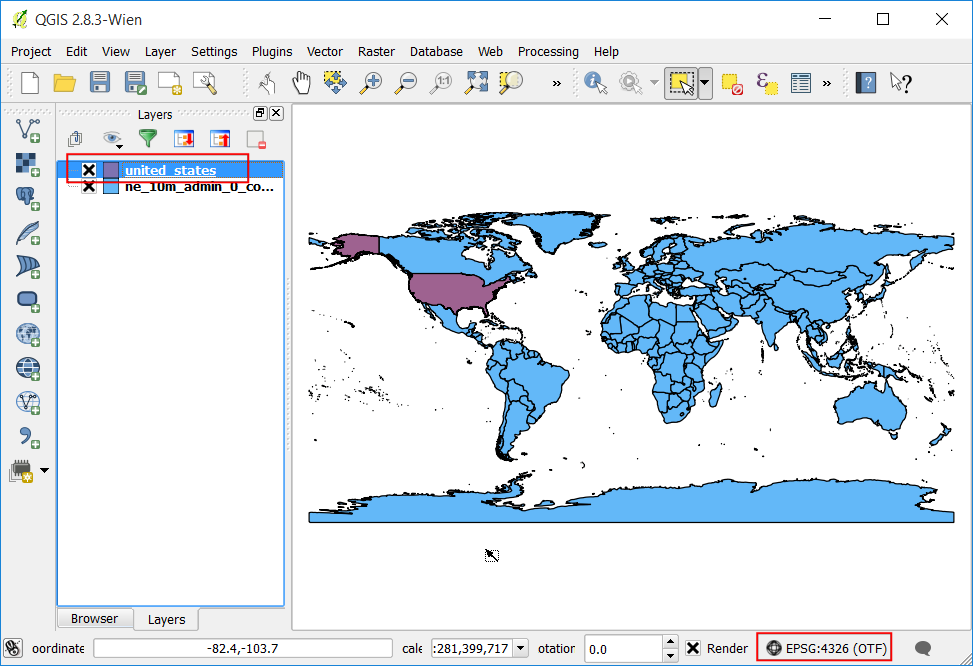
Go to .
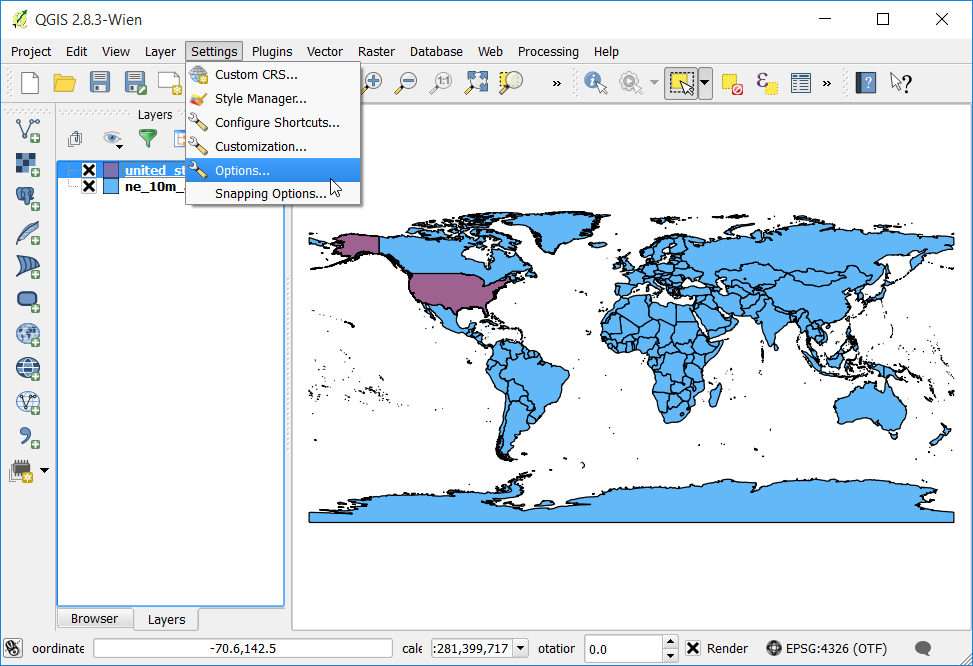
Switch to the CRS tab in the Options dialog. You will see that the default is Automatically enable 'on the fly' reprojection if the layers have different CRS. This means that when QGIS detects that you have loaded layers with different CRS, it will automatically re-project them back to a common CRS so they line up with each other. Click OK.
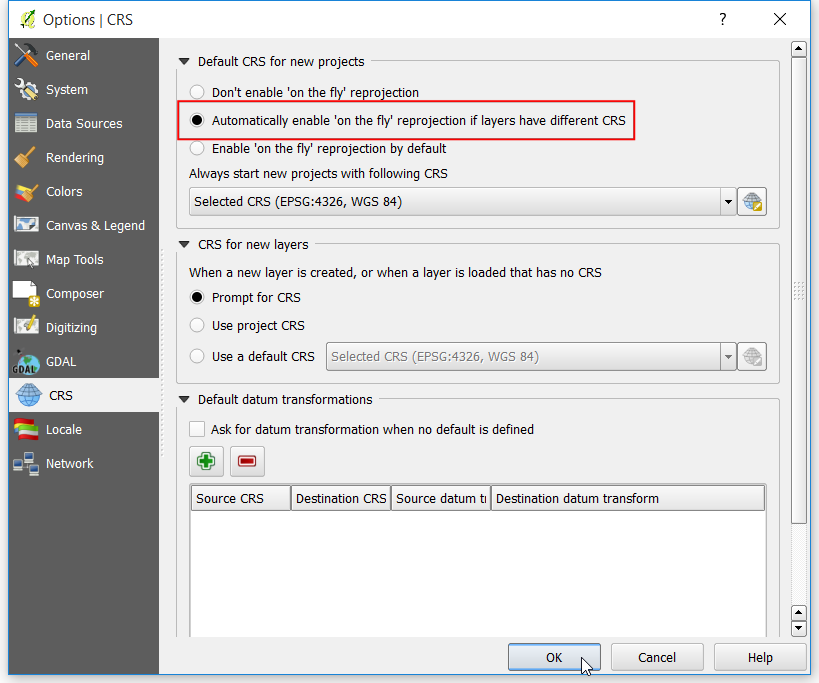
Let's turn-off the On-the-fly CRS transformation and see what happens. Click on the Current CRS text at the bottom-right corner.
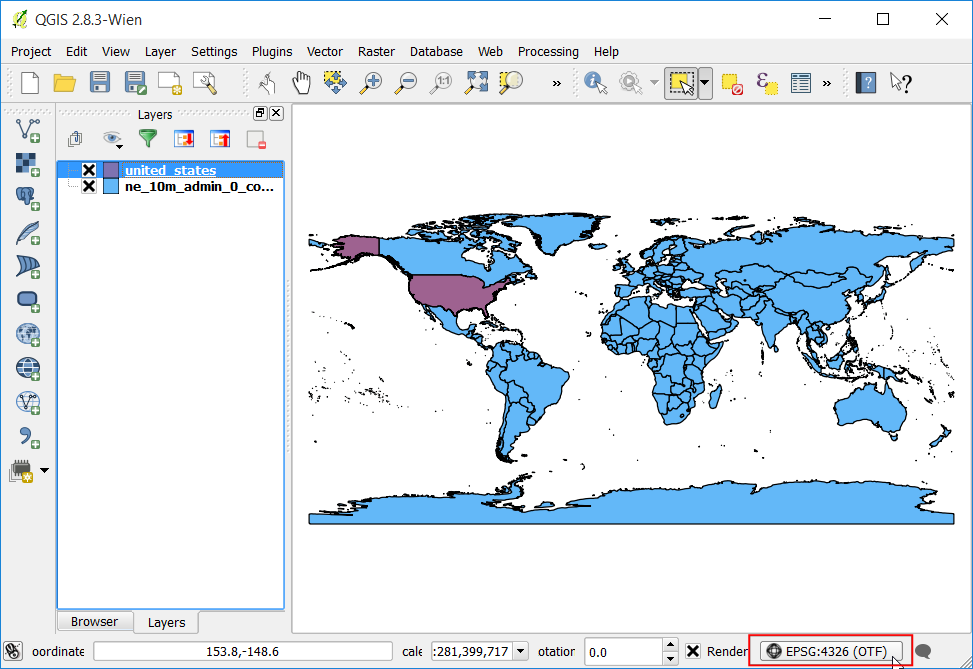
In the Project Properties dialog, un-check the Enable 'on the fly' CRS transformation box and click OK.
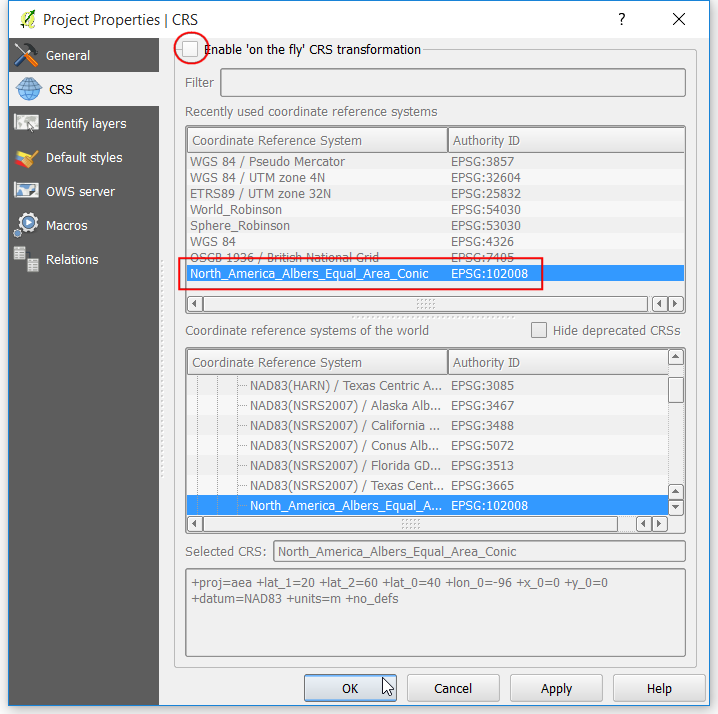
Back in the main QGIS window, you will see the nice World map disappear. This is because the Project CRS changed to
North_America_Albers_Equal_Area_Conicand the coordinates and scale are different now. Right-click theunited_stateslayer and select Zoom to Layer.
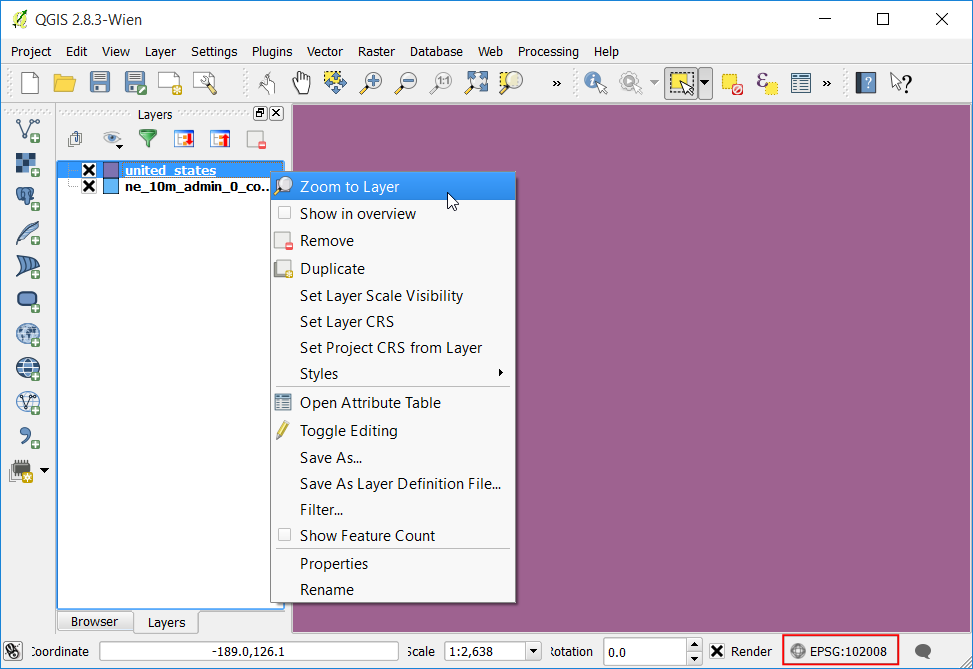
Now you will see the United States in the selected projection. Notice that the features from
ne_10m_admin_0_countriesdo not appear on the canvas as they are in a different coordinate space than theunited_stateslayer. Go back to the Project Properties dialog and turn-on the Enable 'on the fly' CRS transformation option for the remainder of the tutorial.
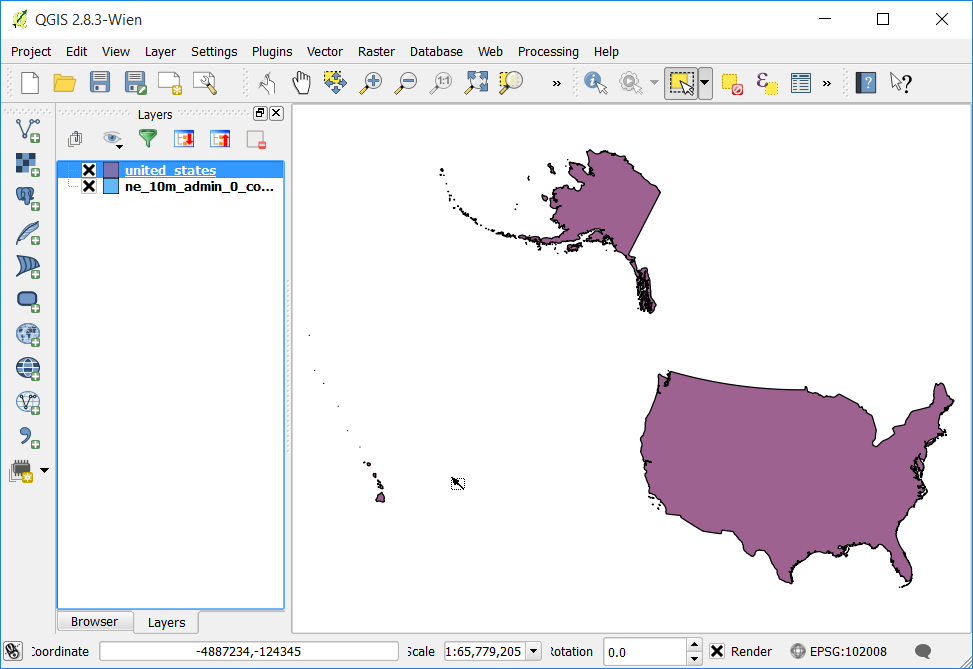
Now let’s switch gears and add a raster layer to our project. Browse to the directory where you had extracted the
minisc_gb.zipfile. Locate theRGB_TIF_COMPRESSEDfolder containing tif files. You will notice that the .tif image files are plain TIF files, not GeoTIFF files. That means they do not have any projection information. To use these images in a GIS, you need to georeference them. A georeference contains 2 types of information - image extents and projection. Typically, the extents are stored in a file known as World file and they have extensions like.tfwor.jgw. Most GIS software, including QGIS would be able to use information stored in the world files as long as they are stored in the same directory as the original image and has the same name. The.tfwfiles for the MiniScale raster files are in a separate folder namedgeoreferencing_files.
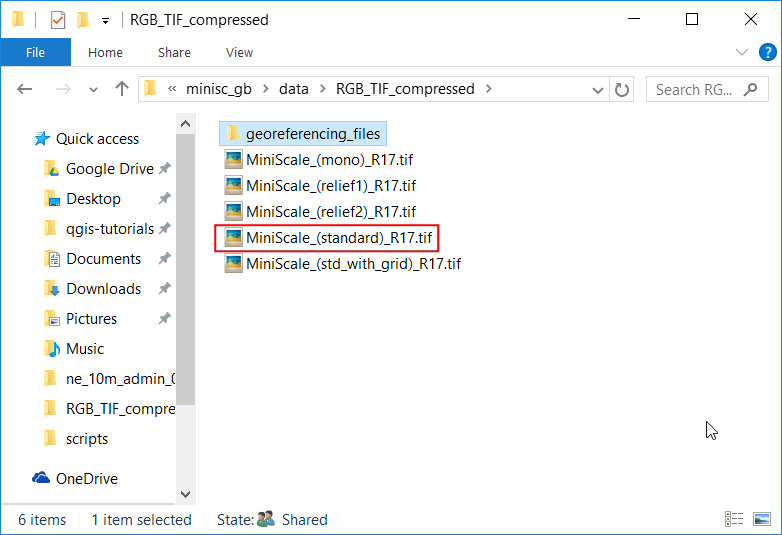
Go to the
ESRI_TFW_FILESfolder withingeoreferencing_files. The.tfwfiles are plain text files. Open one of the.tfwfiles in a text editor.
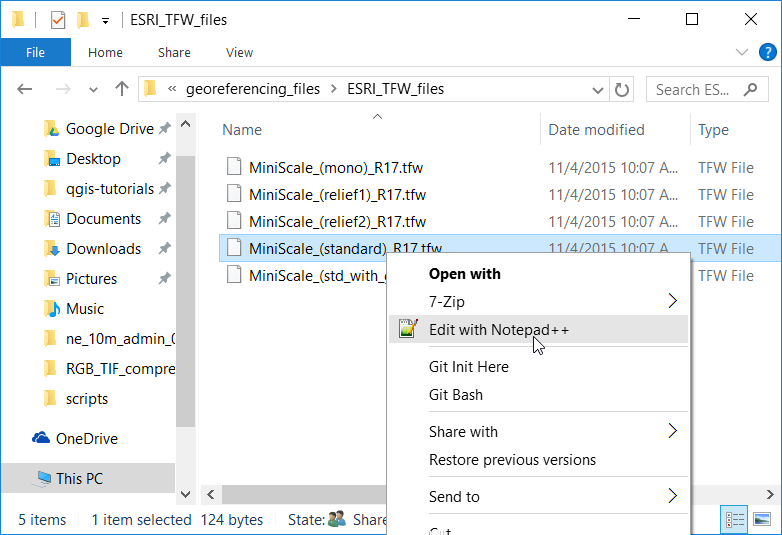
The world files contain 6 lines with some numbers. As explained below, each line signifies some information about the raster file. Knowing this format is useful because some data do not come with the world files and you may have to create these by hand using the supplied information.
Line 1: A: pixel size in the x-direction in map units/pixel
Line 2: D: rotation about y-axis
Line 3: B: rotation about x-axis
Line 4: E: pixel size in the y-direction in map units
Line 5: C: x-coordinate of the center of the upper left pixel
Line 6: F: y-coordinate of the center of the upper left pixel
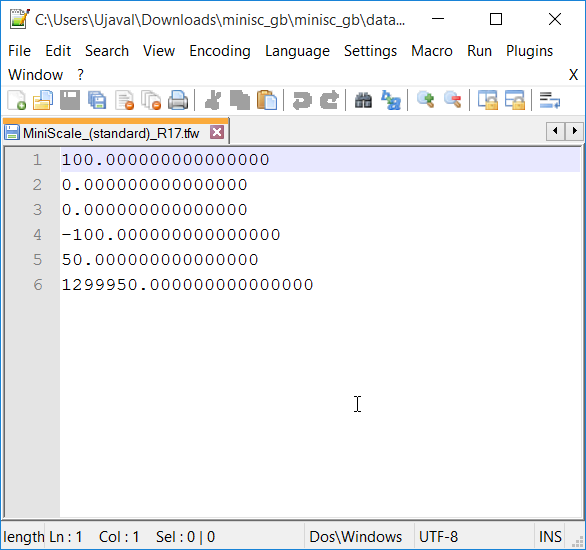
Copy the
MiniScale_(standard)_R17.tfwfile from thegeoreferencing_filesfolder to theRGB_TIF_COMPRESSEDfolder. This way the.tfwand the.tiffiles are in the same directory and QGIS can use the information.
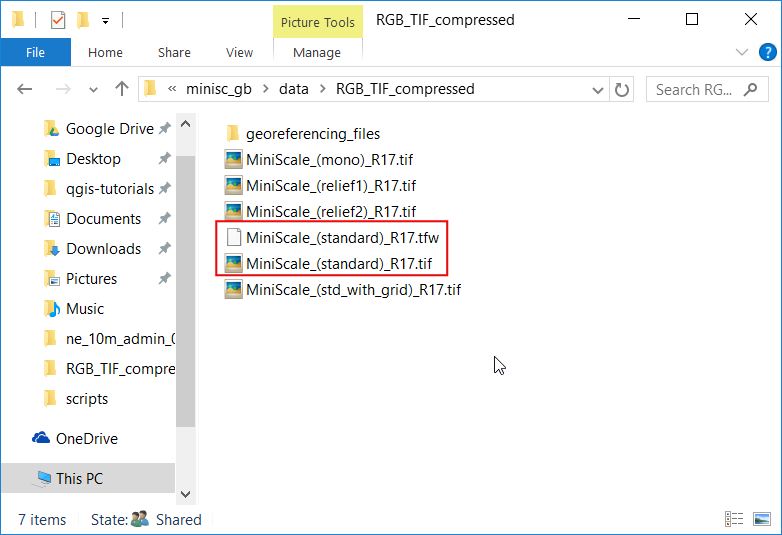
In the QGIS main windows, go to . Browse to the
MiniScale_(standard)_R17.tiffile and click Open.
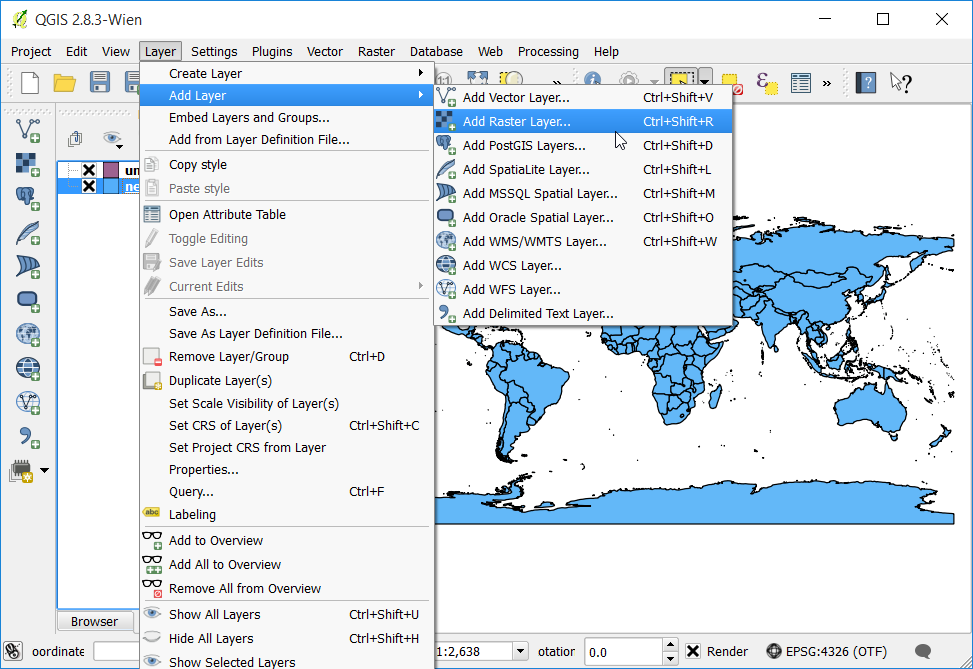
The Ordnance Survey files are in the British National Grid projection. In the Coordinate Reference System Selector dialog, search for
british nationaland pick theOSGB 1936 / British National Grid (EPSG:27700)CRS. Click OK.
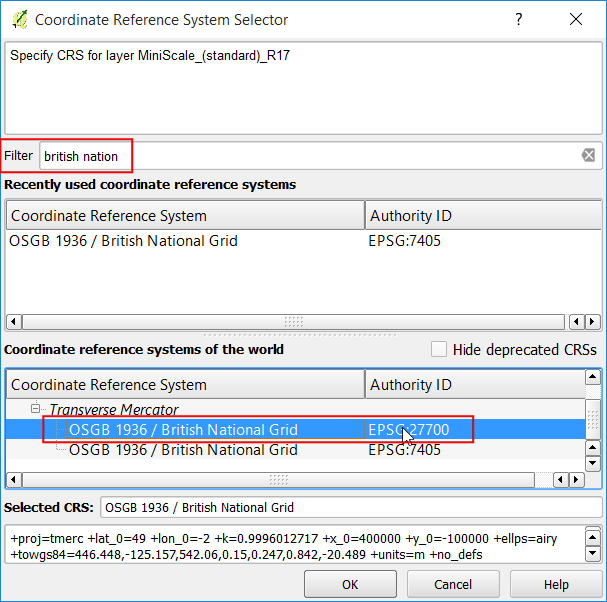
Once the
MiniScale_(standard)_R17layer is loaded, right-click on it and select Zoom to layer.
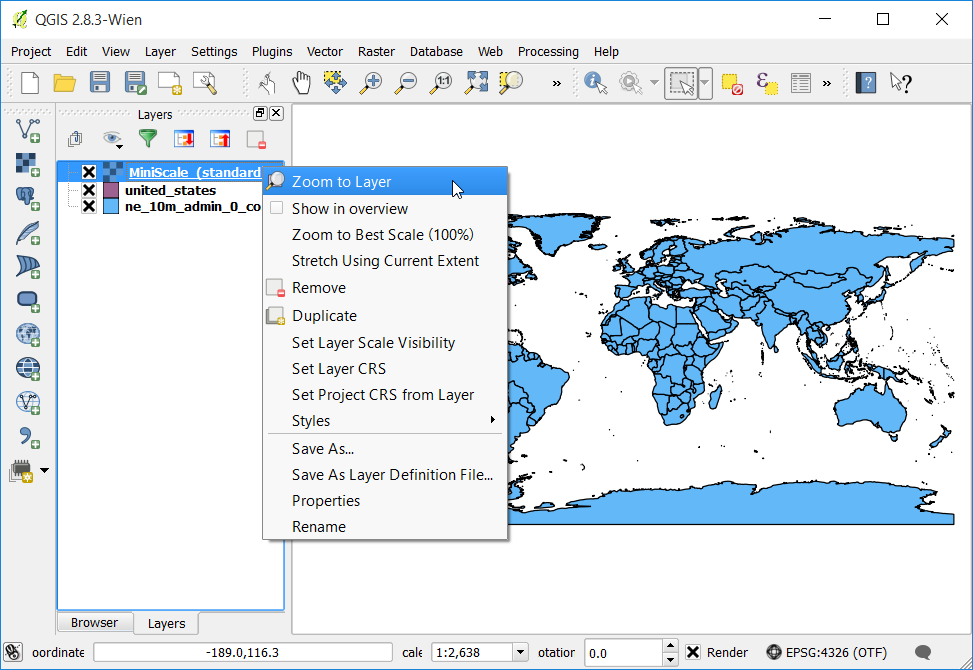
You will see the raster layer overlaid on top of the
ne_10m_admin_0_countriesvector layer. Since we have theOTFenabled with EPSG:4326, theMiniScale_(standard)_R17layer gets dynamically reprojected to EPSG:4326 and shown in the same coordinate space as the other layer.
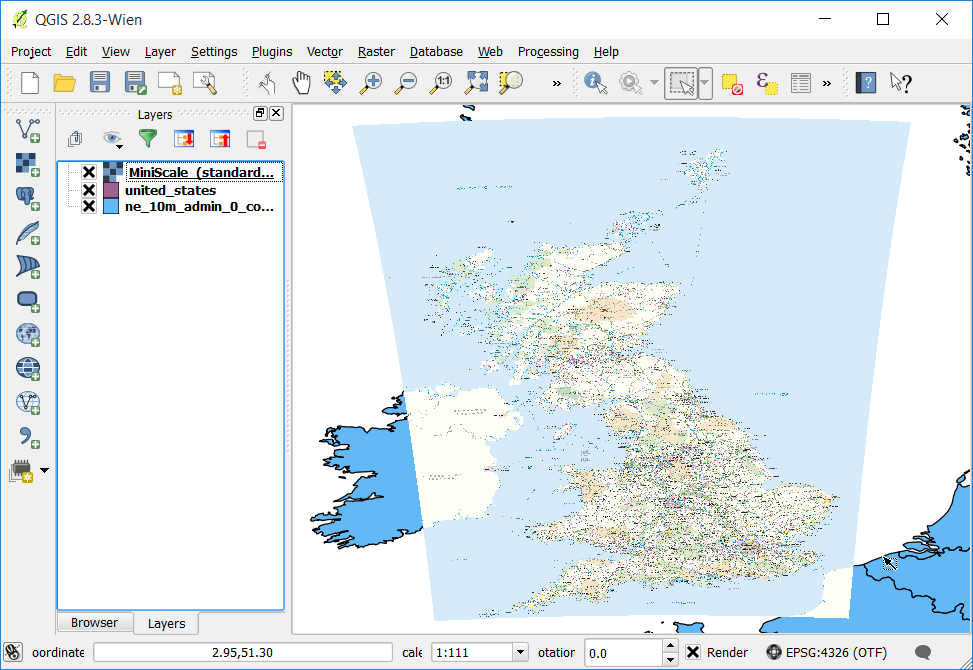
If you want to report any issues with this tutorial, please comment below. (requires GitHub account)